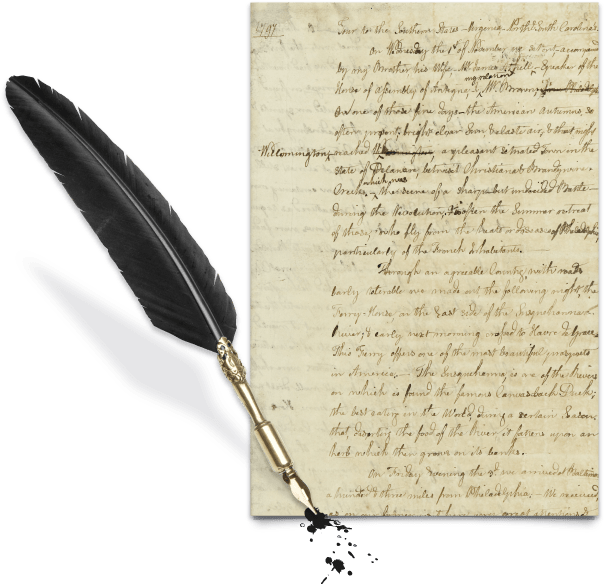The account that Henrietta gives of Virginia is full of wonderment at the beauty of the landscape and astonishment at the different varieties of proprietor and tavern keeper met on the road. Henrietta’s anecdotes of tavern life bring humour to the journal.
During their journey the Listons saw the Shenandoah River, the Rockfish Gap, the Blue Ridge Mountains, and the famed Natural Bridge, before calling on Jefferson at Monticello, James and Dolley Madison at Montpelier, and Martha Washington at Mount Vernon.
Monticello and Mount Vernon
Of Monticello Henrietta writes an all too brief, but fascinating description: 'I had never before seen fine Pictures & Mirrors placed upon bare brick walls; but Mr Jefferson changed so often the Ceiling, the floors, or partitions, that it cannot be otherwise.' Jefferson, with his 'married daughter — a pretty Woman' hosted a dinner for the Listons, James Madison, James Monroe, and a 'group of Ladies'.
At Jefferson's and Madison's the Listons declined, though 'most earnestly pressed' by their hosts, to spend the night, as they were hurried. Robert had an appointment in Washington, DC, to see John Marshall, US Secretary of State, and, on their return to Philadelphia, they had 'still a journey to make & immediately' — this time to Lower Canada.
At Mount Vernon however, the Listons, finding Martha Washington with a 'sorrow which she said was truly breaking her heart', stayed all night and 'took leave with much regret next morning'.

